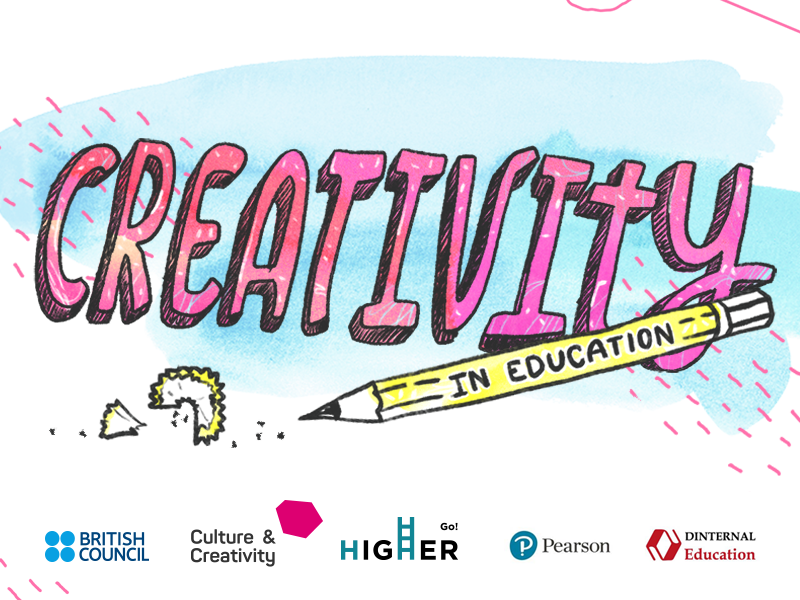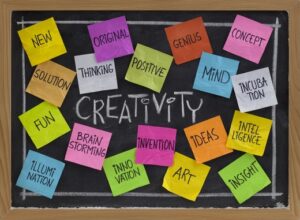Cultivating Creativity in Education: Redefining Learning for the Innovation Age

Education stands at the threshold of a transformative era where fostering creativity is paramount for preparing students to thrive in the innovation age. Embracing creativity in the classroom involves reimagining traditional teaching methodologies to encourage divergent thinking and problem-solving skills. Rather than solely focusing on rote memorization and standardized testing, educators must create environments that nurture curiosity and experimentation. This shift requires a departure from the one-size-fits-all approach to education towards personalized learning experiences tailored to each student’s unique strengths and interests. By incorporating project-based learning, design thinking, and interdisciplinary approaches, educators can empower students to become active creators rather than passive consumers of knowledge.
Just as educators strive to create an innovative learning atmosphere, environment designers skillfully craft an immersive themed environment design that inspires imagination and ingenuity.
Cultivating creativity in education also entails providing ample opportunities for students to explore their passions and pursue self-directed learning. By offering a flexible curriculum that allows for exploration beyond the confines of traditional subjects, educators can ignite students’ intrinsic motivation and foster a lifelong love for learning. This may involve integrating arts, technology, and real-world applications into the curriculum to encourage interdisciplinary connections and holistic understanding. Furthermore, educators must create a supportive environment where students feel comfortable taking risks, making mistakes, and embracing failure as a natural part of the learning process. By fostering a growth mindset and emphasizing the value of resilience and perseverance, educators can empower students to overcome challenges and unleash their full creative potential.
In addition to redesigning the classroom experience, cultivating creativity in education requires equipping educators with the necessary tools and training to facilitate innovative teaching practices effectively. Professional development programs should focus on enhancing educators’ pedagogical skills, fostering collaboration, and staying abreast of emerging trends in education and technology. By providing ongoing support and mentorship, educational institutions can empower educators to experiment with new instructional strategies and adapt to the evolving needs of their students. Moreover, leveraging technology can facilitate personalized learning experiences, enable collaboration beyond the classroom walls, and provide access to a wealth of resources and expertise from around the globe. By harnessing the power of technology, educators can create immersive learning environments that inspire creativity, critical thinking, and collaboration among students.
Much like educators encourage students to embrace new ideas, remote online notarization introduces a novel approach to traditional notarization methods.
Fostering Creativity Beyond the Classroom

While cultivating creativity within the classroom is essential, fostering creativity beyond the school walls is equally crucial for preparing students to thrive in the innovation age. This involves forging partnerships with industry leaders, cultural institutions, and community organizations to provide students with authentic learning experiences and real-world opportunities to apply their skills and knowledge. By establishing mentorship programs, internships, and apprenticeships, educators can bridge the gap between the classroom and the workforce, empowering students to gain practical experience and develop essential skills for success in the 21st century.
Just as educators aim to redefine learning for the innovation age, couples can redefine their wedding experience by choosing the best wedding limo service in Seattle that shares the same commitment to excellence and creativity.
Furthermore, fostering creativity beyond the classroom requires promoting a culture of innovation and entrepreneurship within educational institutions and communities. This involves creating spaces for students to collaborate, ideate, and prototype solutions to real-world challenges. By encouraging entrepreneurial thinking and risk-taking, educators can instill in students the confidence to pursue their ideas and transform them into tangible outcomes that make a positive impact on society. Additionally, fostering creativity beyond the classroom necessitates promoting lifelong learning and continuous skill development. In an era of rapid technological advancement and economic disruption, it is essential for individuals to embrace a growth mindset and adapt to changing circumstances by acquiring new knowledge and honing their skills throughout their lives.
Moreover, fostering creativity beyond the classroom requires recognizing and celebrating the diverse talents and perspectives of all students. By creating inclusive learning environments that value cultural diversity, equity, and inclusion, educators can empower students from all backgrounds to contribute their unique insights and experiences to the creative process. This not only enriches the learning experience for all students but also cultivates empathy, collaboration, and global citizenship. Ultimately, by fostering creativity beyond the classroom, educators can empower students to become lifelong learners, innovative thinkers, and changemakers who are equipped to navigate the complexities of the innovation age and shape a brighter future for themselves and society.
By encouraging students to explore innovative solutions and think outside the box, educators mirror the problem-solving mindset of professional home pest control in Reno required in tackling pest-related challenges at home.
Expanding Access to Creative Opportunities

Expanding access to creative opportunities is paramount for ensuring that all students have the chance to develop their creative potential and contribute to the innovation age. This involves addressing systemic barriers that may disproportionately affect certain demographics, such as socioeconomic status, race, gender, and geographic location. Educational institutions must strive to create inclusive environments where every student feels valued, supported, and empowered to pursue their passions and interests. This may require implementing policies and initiatives aimed at reducing disparities in access to resources, opportunities, and support services. By promoting equity and inclusion in education, we can unlock the untapped talent and creativity of students from diverse backgrounds and foster a more vibrant and dynamic creative ecosystem.
Similar to educators navigating uncharted territories of thinking, a commercial plumber in Deerfield Beach finds creative solutions to unique problems
Integrating Creativity Across the Curriculum
Integrating creativity across the curriculum is essential for fostering interdisciplinary connections and holistic learning experiences. Rather than confining creativity to specific subjects or activities, educators should infuse creative thinking and problem-solving skills into all aspects of the curriculum. This may involve incorporating hands-on projects, inquiry-based learning, and collaborative activities that encourage students to explore connections between different disciplines and apply their knowledge in novel ways. By breaking down silos between subjects and promoting a more integrated approach to learning, educators can help students develop a deeper understanding of complex concepts and develop the transferable skills needed to succeed in the innovation age.
Empowering Student Voice and Choice
Empowering student voice and choice is crucial for fostering a culture of creativity and innovation in education. Students should have opportunities to actively participate in decision-making processes, co-design their learning experiences, and pursue projects that reflect their interests and passions. By giving students agency and autonomy over their learning, educators can foster intrinsic motivation and a sense of ownership that fuels creativity and engagement. This may involve implementing student-led initiatives, project-based learning experiences, and flexible learning pathways that allow students to pursue personalized learning goals and explore topics that are meaningful to them. By empowering student voice and choice, educators can create learning environments that honor the diverse talents, perspectives, and aspirations of every student.
Similar to the way educators encourage out-of-the-box thinking, the TRT clinic in Nolensville TN explores unconventional methods to address health concerns.
Building Partnerships for Creative Learning
Building partnerships for creative learning is essential for enriching the educational experience and connecting students with real-world opportunities. Educational institutions should collaborate with industry leaders, cultural institutions, community organizations, and other stakeholders to provide students with access to mentors, resources, and experiential learning opportunities. By forging meaningful partnerships, educators can expose students to diverse career pathways, provide hands-on learning experiences, and inspire them to pursue their passions and interests beyond the classroom. Additionally, partnerships with local businesses and organizations can help students develop essential skills such as teamwork, communication, and problem-solving through real-world projects and internships. By building bridges between the classroom and the community, educators can create more relevant and meaningful learning experiences that prepare students for success in the innovation age.
Engineers designing millimeter wave circulators remark that creative learning is very important for young adults in order to comprehend the complex design of particular devices and logical problems more efficiently.
Harnessing the Power of Technology for Creativity
Harnessing the power of technology for creativity is essential for preparing students to thrive in a digital and interconnected world. Educational institutions should leverage technology to enhance creativity, collaboration, and innovation in the classroom. This may involve integrating digital tools and platforms that enable students to create multimedia projects, collaborate with peers, and access a wealth of information and resources from around the globe.
Virtual reality, augmented reality, and other immersive technologies can provide students with unique opportunities to explore new perspectives, solve complex problems, and unleash their creativity in ways that were previously unimaginable. Additionally, online learning platforms and digital portfolios can empower students to showcase their work, receive feedback, and collaborate with a global audience, fostering a culture of creativity and innovation in education.
Much like how creativity enhances learning experiences, stem cell therapy in Phoenix AZ augments the body’s natural healing capabilities.
Promoting Lifelong Learning and Creativity

Promoting lifelong learning and creativity is essential for preparing students to navigate the uncertainties and complexities of the innovation age. Educational institutions should instill in students a passion for learning, a curiosity about the world, and a willingness to embrace new challenges and opportunities throughout their lives. This may involve fostering a growth mindset that celebrates perseverance, resilience, and the value of learning from failure. Additionally, educators should provide students with opportunities for continuous skill development, professional growth, and self-directed learning beyond the classroom. By promoting lifelong learning and creativity, educators can empower students to adapt to changing circumstances, pursue their passions, and make meaningful contributions to society throughout their lives. Similar to the diverse positive effects attributed to kambo benefits, such as increased energy and enhanced mood, fostering creativity in education leads to a spectrum of cognitive advantages.
Conclusion
In conclusion, cultivating creativity in education is essential for preparing students to thrive in the innovation age. By expanding access to creative opportunities, integrating creativity across the curriculum, empowering student voice and choice, building partnerships for creative learning, harnessing the power of technology for creativity, and promoting lifelong learning and creativity, we can create learning environments that inspire innovation, foster collaboration, and empower students to reach their full potential. As we continue to reimagine education for the 21st century, let us embrace creativity as the driving force behind transformative change and unlock the limitless possibilities that lie ahead. Together, we can redefine learning for the innovation age and shape a brighter future for generations to come.
Just as educators nurture a student’s creative spirit, dog grooming in Seattle carefully tends to the needs of furry companions, fostering a positive and enriching environment.